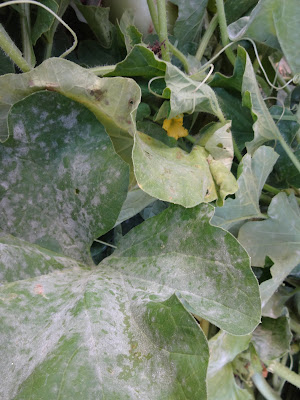As I travel around for my job, I often encounter school and neighborhood gardens along the way. I hope you enjoy a few of the pictures from my travels. The first pictures are ones I took of a wall that is right along where I park next to a school.
I used to grow Purple Hyacinth Bean in Tucson. It was quite good, but a lot of work to prepare.
At another school, I was able to enjoy looking at some light Armenian Cucumbers.
This next garden is pretty fun. The school actually has two garden areas. This is just one of them.
 |
| Luffa |
Luffas are quite interesting. I have never eaten them personally, but I have heard that they are best eaten immature.
 |
| Bitter Melon |
Bitter melon is another Asian favorite for what reason I am not sure. They are apparently very helpful in controlling blood sugar, but as I am generally adverse to anything bitter, I have yet to try them.
 |
| Hyacinth Beans |
I used to grow Purple Hyacinth Bean in Tucson. It was quite good, but a lot of work to prepare.
At another school, I was able to enjoy looking at some light Armenian Cucumbers.
This next garden is pretty fun. The school actually has two garden areas. This is just one of them.
Now that autumn has progressed, the vines of a lot of plants are done growing. I hope you enjoyed a few of the gardens I see as I travel around.




































